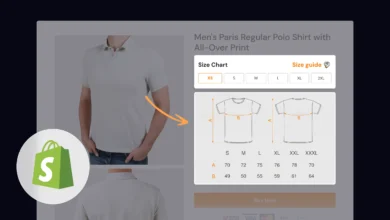Changes to the OAS Clawback in 2024: How It Affects Your Retirement Income

Understanding the OAS Clawback 2024 Adjustments
What is the OAS Clawback?
The Old Age Security (OAS) pension is a monthly payment available to most Canadians 65 years of age or older. It’s funded from the government’s general tax revenues. However, if your income is too high, you might have to pay back some or all of your OAS pension. This repayment is often called the OAS clawback. It’s designed to ensure that those with higher incomes contribute more back to the system. The clawback starts when your net income exceeds a certain threshold. If your income continues to rise, the amount you repay also increases, potentially up to the full amount of OAS you received.
Key Changes Affecting the OAS Clawback in 2024
For 2024, the income thresholds for the OAS clawback have been adjusted. These adjustments are primarily influenced by inflation. The government reviews these thresholds annually to account for changes in the cost of living. For 2024, the repayment income threshold is set at $90,997. If your net income for the year is above this amount, you’ll start repaying a portion of your OAS. The maximum OAS pension repayment occurs when your net income reaches $145,614 or more. At this level, you’ll have to repay the entire OAS amount you received during the year.
Here’s a quick look at the 2024 thresholds:
| Threshold Type | Amount |
| Repayment Income Threshold | $90,997 |
| Maximum Repayment Income | $145,614 |
Impact of Inflation on OAS Clawback Thresholds
Inflation plays a significant role in how the OAS clawback works each year. The thresholds are indexed to inflation, meaning they generally increase over time. This is a good thing for many seniors because it means that more people can earn a higher income before they start having to repay their OAS. For example, if inflation is high, the income level at which the clawback begins will also be higher. This can help protect the real value of retirement income for a larger group of seniors.
The annual adjustment of the clawback thresholds aims to keep pace with the rising cost of living. This means that the income level at which OAS repayment begins is not fixed and changes from year to year based on inflation figures.
Navigating Your Retirement Income with the OAS Clawback
So, you’ve worked hard, saved up, and now you’re looking forward to your retirement income, which often includes Old Age Security (OAS). But there’s this thing called the OAS clawback, and it can actually reduce the amount of OAS you get. It’s basically a way for the government to take back some of your OAS if your income is too high. Let’s break down how this works and what it means for your monthly cheque.
How the OAS Clawback Reduces Your Pension
Basically, if your net income before taxes goes above a certain amount, you start losing a portion of your OAS payment. For every dollar you earn over that threshold, you lose about 15 cents of your OAS. This continues until your income reaches a higher threshold, at which point you might lose your entire OAS payment. It’s not a direct cut to your pension from a private plan, but it does affect the total amount of money you have coming in each month.
Here’s a simplified look at how it can play out:
- Threshold 1 (Clawback Starts): If your income is below this, you get your full OAS.
- Income Between Thresholds: You’ll get a reduced OAS payment.
- Threshold 2 (Full Clawback): If your income is at or above this, you won’t receive any OAS.
The exact dollar amounts for these thresholds change each year, often tied to inflation. It’s important to know where you stand relative to these numbers.
Strategies to Mitigate the OAS Clawback Impact
It can feel a bit unfair to have your retirement income reduced, but there are ways to manage it. Thinking ahead is key. One common approach is to try and spread out your income over your retirement years. This might mean not taking all your money out of registered accounts at once, or perhaps timing withdrawals differently.
Here are a few ideas:
- Spread Out Income: Instead of taking large lump sums from your RRSP or RRIF, consider smaller, more regular payments. This can help keep your annual income below the clawback thresholds.
- Tax-Free Savings Account (TFSA) Withdrawals: Money taken from a TFSA doesn’t count as taxable income, so it won’t trigger the OAS clawback. Prioritizing TFSA withdrawals can be a smart move.
- Delaying Income: Sometimes, if you have other savings or income sources, you might be able to delay drawing from certain registered accounts until later in retirement, potentially after you’ve passed the highest income years.
Planning for Reduced OAS Payments
Since the clawback is a real possibility for many, it’s wise to plan as if you might not get the full OAS amount. This means looking at your entire retirement income picture. What other sources do you have? Do you have savings outside of registered accounts? Are there other government benefits you might be eligible for?
- Budgeting: Create a realistic retirement budget that accounts for potentially lower OAS payments. See if your essential expenses can be met without the full amount.
- Review Investments: Look at your investment portfolio. Are there ways to generate income that are less likely to push your income over the clawback limits? This might involve looking at different types of investments.
- Consider Part-Time Work: If you plan to work part-time in retirement, be mindful of how that additional income will affect your OAS. Sometimes, working fewer hours or earning a bit less can make a big difference in your net OAS payment.
Who is Most Affected by the OAS Clawback 2024?
So, who exactly feels the pinch of the OAS clawback the most? It’s not everyone, but if your retirement income is on the higher side, you’re definitely in the group that needs to pay attention. The government sets income thresholds, and if your net income goes above those, a portion of your Old Age Security (OAS) pension gets taken back. It’s designed to make sure that those who need the OAS benefit the most receive it without reduction.
Identifying High-Income Seniors
Generally, seniors with higher net incomes are the ones who will see their OAS payments reduced. This typically includes individuals who have had consistent earnings throughout their careers, have substantial savings and investments that generate income, or receive significant pension benefits from former employers. The key factor is your net income in a given tax year, which determines your eligibility for the full OAS amount in the following year.
The higher your net income, the greater the potential clawback.
Impact on Different Retirement Income Sources
The OAS clawback doesn’t discriminate based on where your income comes from, but rather the total amount. However, certain income sources can push you over the threshold more easily than others.
- Employment Income: If you continue to work past the traditional retirement age, this income directly adds to your net total.
- Investment Income: Dividends, interest, and capital gains from non-registered accounts count towards your income.
- Registered Retirement Income Funds (RRIFs) and Pension Income: Withdrawals from these sources are generally taxable and contribute to your net income.
- Rental Income: Profits from properties you own are also included.
Case Studies of OAS Clawback Scenarios
Let’s look at a couple of hypothetical situations to make this clearer. Remember, these are simplified examples, and your personal situation might be different.
Scenario 1: The Active Retiree
- Income Sources: Part-time work ($30,000), OAS ($7,000), Private Pension ($20,000).
- Total Net Income: Approximately $57,000.
- OAS Clawback: In this case, the individual might be close to or just over the clawback threshold, potentially losing a small portion of their OAS.
Scenario 2: The Well-Off Investor
- Income Sources: Significant investment portfolio withdrawals ($50,000), OAS ($7,000), RRIF withdrawals ($40,000).
- Total Net Income: Approximately $97,000.
- OAS Clawback: This individual would likely experience a substantial OAS clawback, possibly losing a significant percentage, or even all, of their OAS payment.
It’s important to remember that the clawback is calculated based on your income from the previous year. So, if you have a particularly high-income year due to selling an asset or a large bonus, it could affect your OAS payments two years down the line. Planning ahead can help smooth out these effects.
Maximizing Your Retirement Savings Amidst OAS Changes
So, the OAS clawback is changing, and it might mean less money in your pocket each month. It’s a bit of a bummer, but don’t despair! There are smart ways to adjust your retirement savings strategy to soften the blow. The key is to be proactive and plan ahead.
Tax-Efficient Retirement Income Strategies
When you’re figuring out how to draw down your savings, think about taxes. Some income sources get hit harder by taxes than others, and that can affect how much you have left after the OAS clawback. It’s not just about the total amount you withdraw, but how you withdraw it.
- Spread out your income: Instead of taking a huge chunk from one account, try to pull smaller amounts from different sources. This can sometimes keep your taxable income lower in any given year.
- Consider taxable accounts first: For some people, it makes sense to use up money in regular investment accounts before touching registered accounts like RRSPs or RRIFs. This is because the withdrawals from registered accounts are fully taxable and can push you into a higher tax bracket, potentially increasing the OAS clawback.
- Timing matters: Think about when you’re taking income. If you have a year with lower expenses or other income, you might be able to withdraw more from taxable sources without triggering a big OAS clawback.
It’s easy to get caught up in just the numbers, but remember that taxes play a big role in your actual take-home pay. A little planning can make a surprising difference.
Leveraging Registered Retirement Savings Plans (RRSPs)
RRSPs are great for saving, but how you convert them to income in retirement is where the OAS clawback comes into play. When you turn 71, your RRSP has to be converted into a Registered Retirement Income Fund (RRIF) or used to buy an annuity. The income you receive from a RRIF is taxable income, and that’s what the government looks at when calculating the OAS clawback.
- Spousal RRSPs: If you have a spouse or common-law partner with lower income, contributing to a spousal RRSP can help. When you retire, you can split the RRIF income, potentially lowering both your taxable incomes and reducing the OAS clawback for each of you.
- Annuities: Buying an annuity with your RRSP can provide a steady income stream. However, the entire annuity payment is considered taxable income. You need to weigh the certainty of the income against the potential for a higher OAS clawback.
- Withdrawal strategy: You’re required to take a minimum amount from your RRIF each year, but you can take more if you need it. If you anticipate a higher income year and a potential clawback, you might consider taking a bit less from your RRIF and more from other sources, if possible.
Considering Other Income Streams
Don’t forget about all the other ways you might have income in retirement. These can be used strategically to manage your overall taxable income and, by extension, the OAS clawback.
- Tax-Free Savings Accounts (TFSAs): Withdrawals from TFSAs are completely tax-free and don’t count as income for OAS clawback purposes. This makes them a fantastic source of retirement income that won’t affect your OAS payments.
- Part-time work: If you plan to work part-time in retirement, consider how that income will be taxed and how it might interact with the OAS clawback. Sometimes, earning a little more can push you over the threshold.
- Rental income: If you own rental properties, the net income from these is taxable. You’ll need to factor this into your overall income calculations.
It’s all about looking at the big picture. By understanding how each piece of your retirement income fits together, you can make smarter choices to keep more of your hard-earned money.
Resources for Understanding the OAS Clawback 2024
So, you’re trying to get a handle on the OAS clawback, especially with the 2024 changes? It can feel a bit like trying to untangle a ball of yarn sometimes, right? Let’s break down where you can find reliable information and get some help.
Official Government Information Sources
Your first stop should always be the official government websites. They have the most up-to-date and accurate details about the OAS clawback. You can find information specific to the OAS clawback 2023, the OAS clawback 2024, and even look ahead to the OAS clawback 2025. These sites usually have FAQs, guides, and sometimes even calculators.
- Canada.ca: This is the main portal for all government services. Look for sections related to seniors’ benefits or income security.
- Employment and Social Development Canada (ESDC): This department often handles the administration of OAS benefits.
- Canada Revenue Agency (CRA): The CRA is involved in how income is reported and how taxes affect your OAS payments.
It’s easy to get lost in all the numbers and rules. Sticking to official sources means you’re getting the facts straight from the horse’s mouth, which is always the best approach when dealing with your retirement income.
Seeking Professional Financial Advice
Sometimes, reading the official stuff just doesn’t cut it, or you have a unique situation. That’s where professionals come in. They can help you understand how the OAS clawback affects your specific retirement plan.
- Financial Planners: Look for certified financial planners (CFPs) who specialize in retirement planning. They can help you adjust your investment and withdrawal strategies.
- Tax Advisors: A good tax advisor can explain the tax implications of your income sources and how they interact with the OAS clawback.
- Retirement Counselors: Some organizations offer free or low-cost retirement counseling services that can provide general guidance.
Tools for Estimating OAS Clawback
While official government sites are great for facts, you might want to play around with numbers to see how changes might affect you. There are tools that can help with this.
- Online Calculators: Many financial institutions and reputable financial news sites offer OAS clawback calculators. These can give you an estimate based on your projected income.
- Personal Finance Software: Some budgeting and financial planning software includes features to estimate government benefits and deductions.
- Spreadsheets: If you’re comfortable with them, creating your own spreadsheet can be a good way to model different income scenarios and see the potential OAS clawback impact.
Wrapping Up: What This Means for Your Nest Egg
So, that’s the lowdown on the 2024 OAS clawback changes. It’s not the most exciting topic, I know, but understanding how it might affect your retirement money is pretty important. For many, it means a bit less income than they might have expected, especially if your earnings creep up. The main takeaway is to keep an eye on your total income as you get closer to retirement and maybe even talk to a financial advisor. Planning ahead can make a big difference in how comfortable your retirement years are. It’s all about being prepared so you don’t get any nasty surprises down the road.
Frequently Asked Questions
What exactly is the OAS clawback?
Think of the OAS clawback as a way the government gets back some of the Old Age Security (OAS) money it gives you if your income is too high. It’s like a payback if you’re earning a good amount in retirement.
How does inflation affect the OAS clawback?
Inflation means prices go up, so the government usually raises the income limits for the clawback each year. This means you might need to earn a bit more before they start taking back your OAS money.
Can I do anything to get more OAS money?
Yes, there are ways! You can try to lower your taxable income. This might involve saving money in tax-sheltered accounts like RRSPs or making smart choices about how you take money out in retirement.
Who usually has to pay back OAS money?
People who are collecting OAS and have a higher income are the ones most likely to face the clawback. This often includes retirees who have significant savings or continue to work.
How much OAS money might I lose?
The amount you might lose depends on how much your income is over the limit. For every dollar you earn above a certain point, they take back about 15 cents of your OAS payment until it’s all paid back.
Where can I find official information about the OAS clawback?
The best place to look is the official Government of Canada website. They have all the up-to-date details and explanations. Talking to a financial advisor is also a great idea to understand your specific situation.



